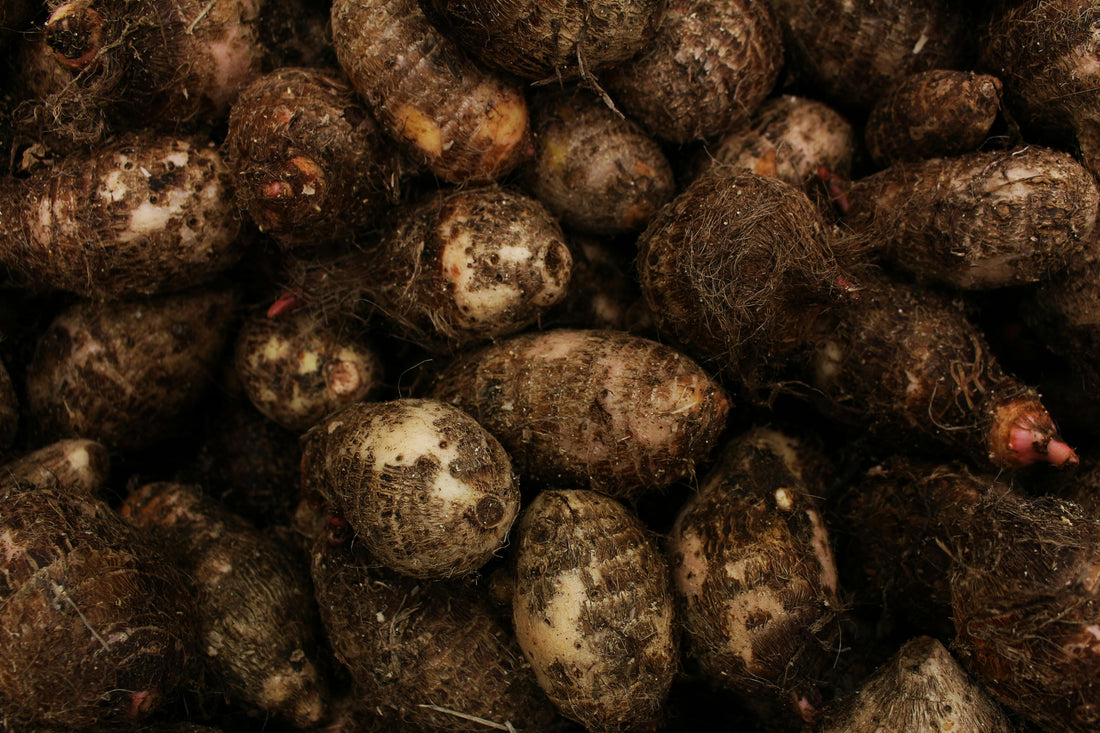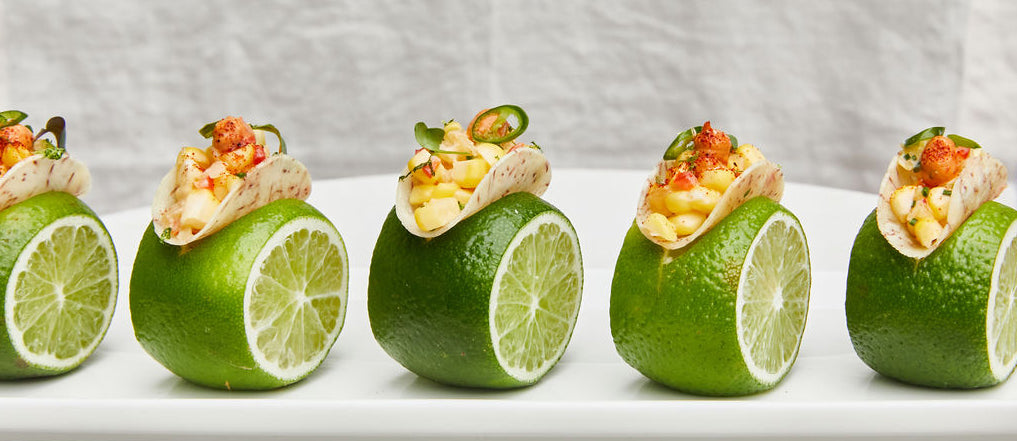
Is Malanga the Same as Taro?
Are Taro and Malanga related?
Wandering through a Latin American or Caribbean market, you may come across a root vegetable called malanga. This knobby tuber is a staple in kitchens worldwide, but is it the same as taro? The short answer is: not quite.
Taro and malanga are closely related and often used interchangeably. In fact, it's a common misconception that malanga is simply the Spanish word for the english word taro.
We're here to explore the differences and similarities between malanga and taro. This article also explores how both root vegetables are used and celebrated in a variety of cuisines.
Malanga vs. Taro: What’s the Difference?
At first glance, malanga and taro seem similar—both are starchy root vegetables with brown, rough exteriors and creamy interiors. However, they belong to different plant families.
Taro (Colocasia esculenta) originated in Southeast Asia and gets cultivated in regions across the world. It has a slightly sweeter flavor than malanga and can be used in savory dishes or desserts. Taro flesh is often a creamy white with dashes of lavender or purple.
Malanga (Xanthosoma sagittifolium), also called Malanga blanca or Yautía in Spanish, originated in the Caribbean and parts of South America. While it shares many characteristics with taro, it can be starchier in texture and has a slightly nutty flavor. For these reasons, many use malanga for hearty soups, stews, and fritters.
Malanga and taro are part of the family of root vegetables known as tubers. But they're different species. Both are also used as substitutes for potatoes in many cultures. Their nourishing versatility in cooking is one of the reasons both have earned loyal followings in various cuisines worldwide.

How are Malanga and Taro Cooked?
Both malanga and taro are used in many ways. For instance, some mash warm taro into poi or soups while others slice it for the main ingredient of crispy snacks or taco shells. Here are other common culinary uses for malanga and taro:
In Soups and Stews: Malanga and taro are often added to broths and stews for its thickening properties and subtle flavor. They're also found in Caribbean and Latin American traditional dishes.
Fried: Like taro, malanga can be sliced thin then fried into fritters or crispy chips. You might find malanga fritters or croquettes on many South American and Caribbean restaurant menus and street carts.
Mashed: Boiled or steamed, malanga and taro can be mashed much like potatoes. Mashed malanga's often served as a side dish with meat or vegetables. Its starchy, creamy texture makes it a popular substitute in many potato-based dishes.
Baked: Malanga can also be baked. These root vegetables have a versatile texture. That's why they're suitable for both savory and sweet baked goods. In the same way, taro is often baked in a variety of Asian desserts.
The Cultural Significance of Malanga and Taro
Malanga and taro hold deep cultural significance across the globe. In the Caribbean, Central America, and parts of Africa, malanga serves as a staple in many homes. Its ability to thrive in tropical climates means it's a key ingredient in regions where other crops might struggle.
Similarly, taro is beloved in many parts of Asia and the Pacific Islands. That's especially true in Hawaii, where it holds spiritual and cultural significance, symbolizing the relationship between people and their land.
In cultures like those of the Philippines, China, and Japan, taro is also an essential part of festive dishes and traditional desserts.
Why We Love Taro at Tiny Taco BK
At Tiny Taco BK, we're especially fond of taro for its unique texture and flavor. Taro serves as the main ingredient of our signature Tiny Tacos. It brings a crispy and non intrusive crunch to complement any spices and fillings perfectly. That's how taro serves up a delicious twist on the classic taco experience.
We tried every possible ingredient in the process of creating our signature tiny tacos. Taro turned out to be perfect for several reasons. It's elegant constitution holds up under virtually any filling with a delightful crunch.
Also, for all that taro brings to each bite, the crispy shell never imposes on filling. Instead, tiny tacos enhance your favorite filling flavors without intrusion.
Taro's a magical root vegetable that delivers textural and cultural richness. We’re obsessed with it, and you will be too once you’ve tried it!
Conclusion: Is Taro the Same as Malanga?
While malanga and taro share similarities in appearance and use, they're distinct root vegetables. Each brings something unique to the table. Both are treasured in different parts of the world for their versatility and cultural significance.
Whether you prefer malanga or taro, one thing’s for sure—this humble root vegetable is here to stay, and we couldn’t be happier to feature it in our Tiny Tacos.
Sources
USDA National Plant Database and The Plant List confirm the taxonomic differences between Xanthosoma sagittifolium (malanga) and Colocasia esculenta (taro), including their botanical classification.
The Hawaiian Cultural Center: Offers insight into traditional Hawaiian food and agriculture practices, especially the importance of native vegetables like taro (kalo). Website: hawaiiancc.org
The Southeast Asian Center for Agricultural Sciences: Offers academic insights into the role of indigenous crops, including vegetables, in Southeast Asian cultures. Website: seacas.org
Edible Communities: A network of local food publications with a focus on traditional and sustainable food systems, including those in the Caribbean, Southeast Asia, and Hawai'i. Website: ediblecommunities.com
My Caribbean Food - How to Use Malanga in Cooking.
The Taro Project - Taro in Pacific Island Culture.
Caribbean Cooking - Malanga in Caribbean Cuisine.
The Spruce Eats - Taro vs. Potatoes: Culinary Uses.
NYC Eater - Restaurants Using Taro in Modern Dishes.

